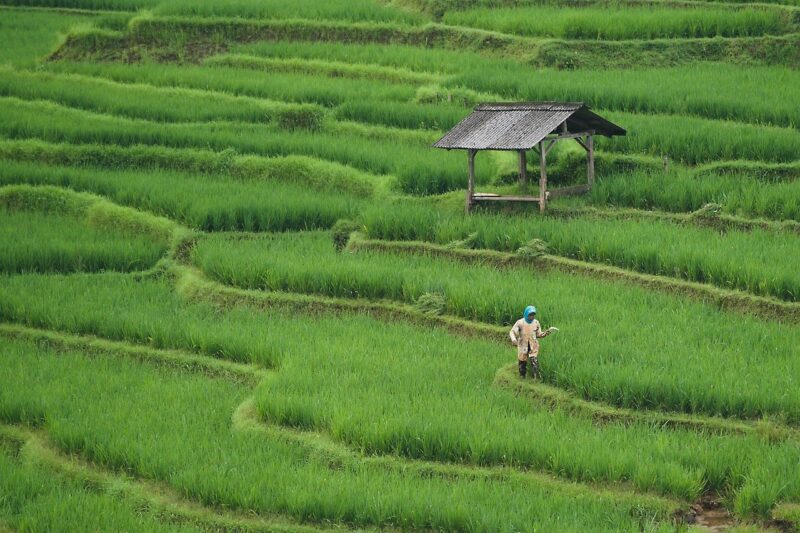The Impact of Rain Patterns on Ancient Civilizations and Their Agriculture
November 12, 2024

Rain patterns have played a pivotal role in the development of ancient civilizations, influencing agricultural practices, economic stability, and societal structures. From the fertile crescent of Mesopotamia to the rice paddies of ancient China, the availability and predictability of rainfall were critical for sustaining populations and fostering the growth of cities.
1. Understanding Ancient Civilizations and Their Relationship with Rainfall
For countless generations, human societies have relied on agriculture as a primary means of sustenance. Ancient civilizations were no exception. Understanding how rainfall patterns affected agriculture is essential to grasp the socio-economic dynamics of these ancient cultures. Rainfall not only dictated the ability to grow food but also influenced trade, migration, and the rise and fall of powerful states.
The survival of these communities hinged on their ability to harvest crops effectively. Therefore, civilizations developed methods to forecast rainfall, which included observing animal behavior, cloud patterns, and seasonal cycles.
2. Case Study: The Fertile Crescent
Located in the region between the Tigris and Euphrates rivers, the Fertile Crescent is often credited as the cradle of civilization. Here, the physical geography was conducive to agriculture, primarily due to abundant rainfall in certain seasons.
The early inhabitants learned to harness rain-fed agriculture, planting crops such as wheat and barley during the autumn rains. However, as weather patterns shifted over centuries, particularly during periods of aridity, the reliance on rain became a double-edged sword. Some communities adapted by developing irrigation techniques to channel river water, allowing for more controlled agriculture. This adaptability triggered the rise of cities such as Uruk and Babylon.
3. Ancient Egypt: The Gift of the Nile
In contrast to the Fertile Crescent, Ancient Egypt’s agriculture was closely tied to the Nile River, which flooded annually due to seasonal rains in East Africa. The inundation deposited nutrient-rich silt along the banks, creating fertile land for growing staple crops like emmer wheat and flax.
Egyptians developed a calendar based on the annual rising and falling of the Nile, which allowed them to synchronize planting and harvesting times effectively. The predictability of seasonal rains contributed to Egypt’s agricultural success, leading to surplus grain that supported a powerful economy and central authority.
However, fluctuations in rainfall patterns, whether due to climate change or geological events, could disrupt the annual floods, leading to famine or societal unrest. Historical records indicate several instances where changes in the Nile’s flood levels caused significant strife, demonstrating how detrimental the loss of reliable rain patterns could be.
4. The Indus Valley Civilization: Rainfall and Urban Planning
The Indus Valley Civilization (IVC), flourishing from approximately 3300 to 1300 BCE, provides an insightful example of how rainfall patterns influenced urban planning and agriculture. Situated in present-day Pakistan and northwest India, the IVC’s cities like Mohenjo-Daro and Harappa were strategically placed in regions receiving adequate monsoon rainfall.
The summer monsoon brought essential rainfall for the cultivated rice and wheat, which were the backbone of the economy. Rather than relying solely on river systems, the IVC showcased advanced public works including extensive drainage systems to manage excess water flows effectively, ensuring minimal flooding and maximizing agricultural productivity.
Yet, as the monsoon patterns became erratic towards the civilization’s decline, agricultural outputs fell significantly, leading to urban depopulation and economic deterioration.
5. The Maya Civilizations and Seasonal Variability
In the lush landscapes of Mesoamerica, the Maya civilization thrived thanks to a deep understanding of seasonal cycles and rain patterns. They developed an intricate knowledge of slash-and-burn agriculture, which allowed them to convert forest land into arable fields intermittently.
The rainfall patterns varied significantly between the wet and dry seasons, and the Mayans built sophisticated systems of terracing and water management to store rainwater and direct runoff. This adaptation allowed them to cultivate vital crops such as maize and cacao.
However, extensive deforestation and agricultural practices strained the land’s ecological balance. A series of prolonged droughts during the late classic period centering around 800-1000 CE gravely impacted agriculture, contributing to the eventual collapse of many urban centers as famine became rampant.
6. Conclusion: The Lasting Impact of Rain Patterns on Civilizations
In closing, it is evident that rainfall patterns were more than mere weather phenomena; they were a primary determinant of agricultural viability and, by extension, the sustainability of ancient civilizations. Cultures that learned to adapt to the rhythms of nature through innovation and foresight enjoyed prosperity and stability. Conversely, those that failed to predict or adapt to changing conditions often fell into decline.
The legacies of these civilizations remind us of the delicate relationship between humans and the environment, offering insights into modern agricultural practices and the importance of sustainable water management.
As we face contemporary challenges posed by climate change, it becomes increasingly vital to heed the lessons learned from ancient societies and their intricate relationship with rain patterns.








